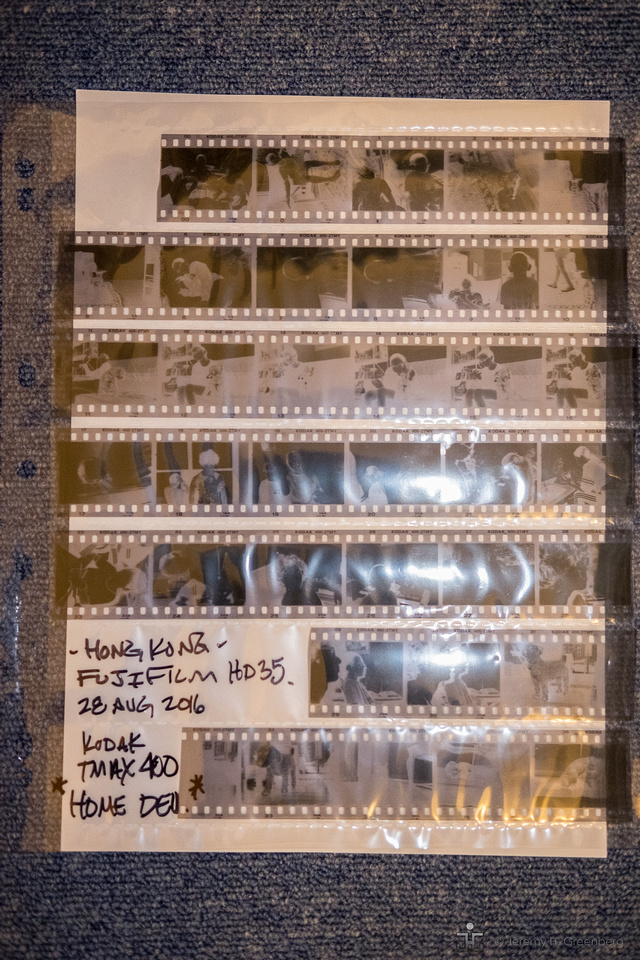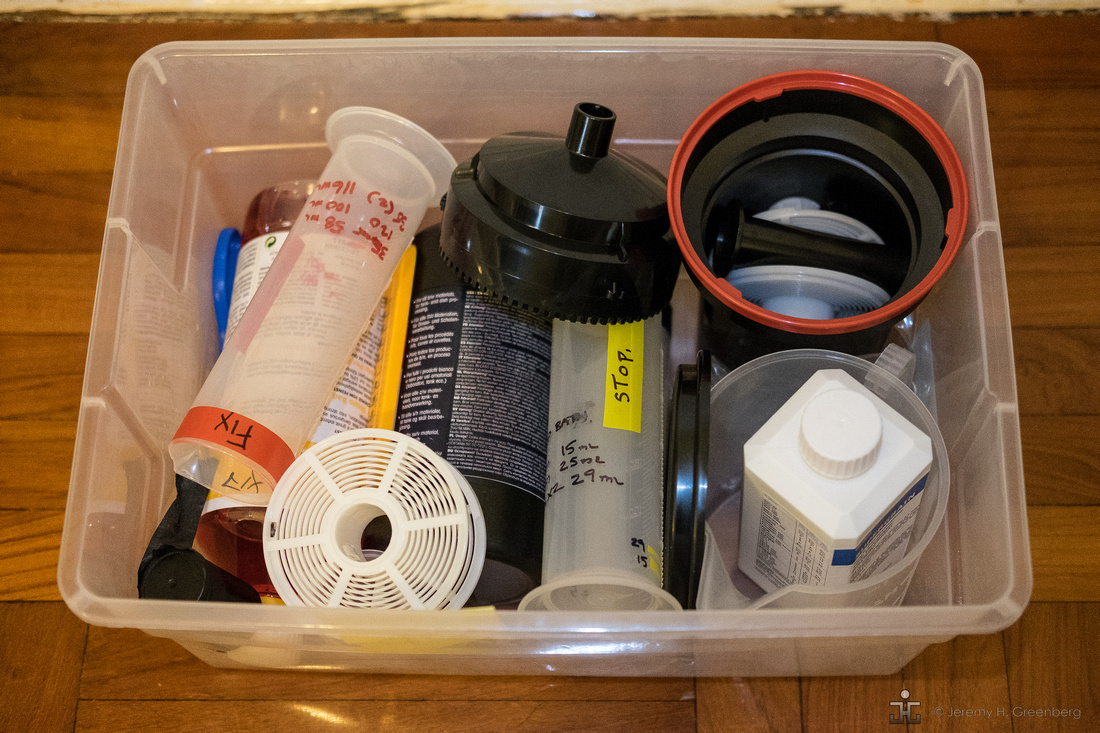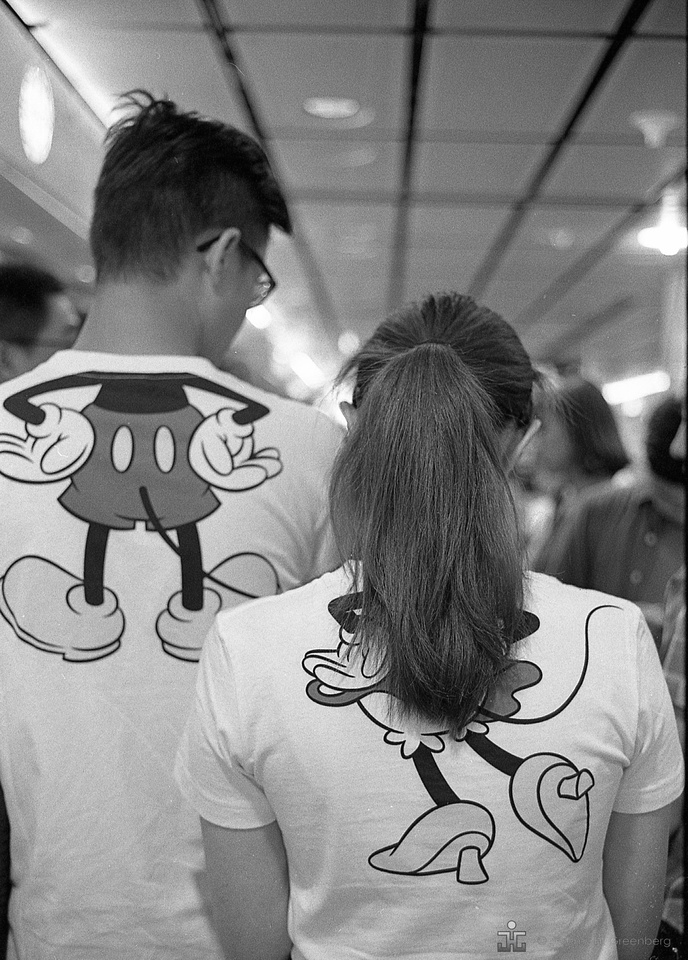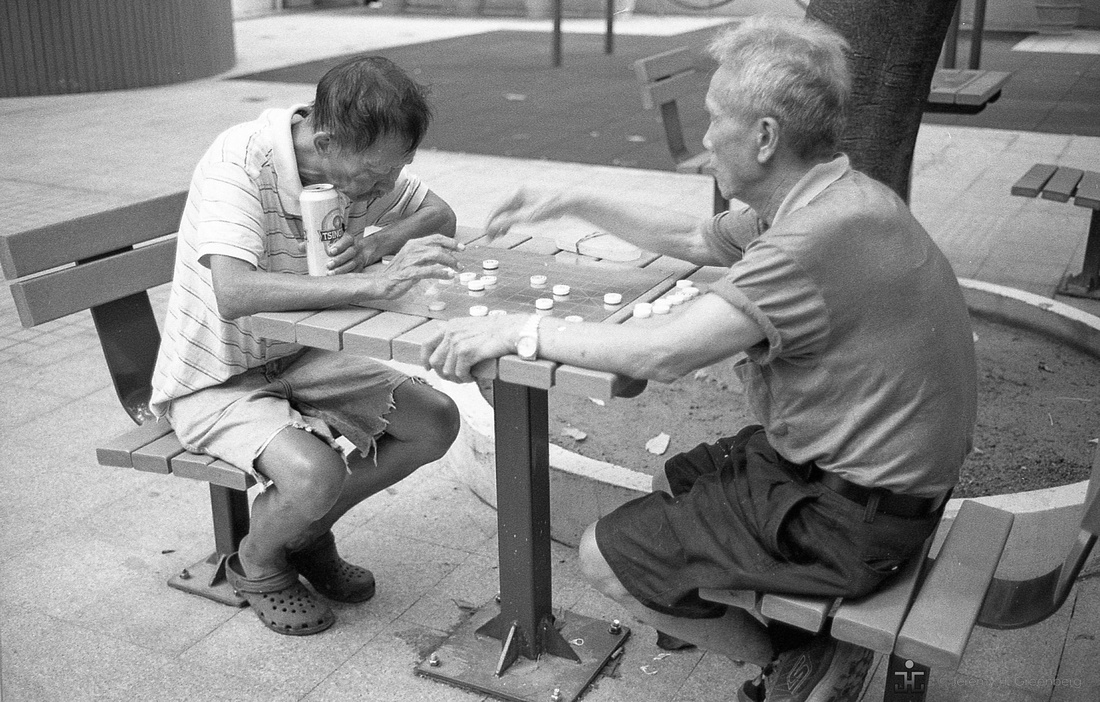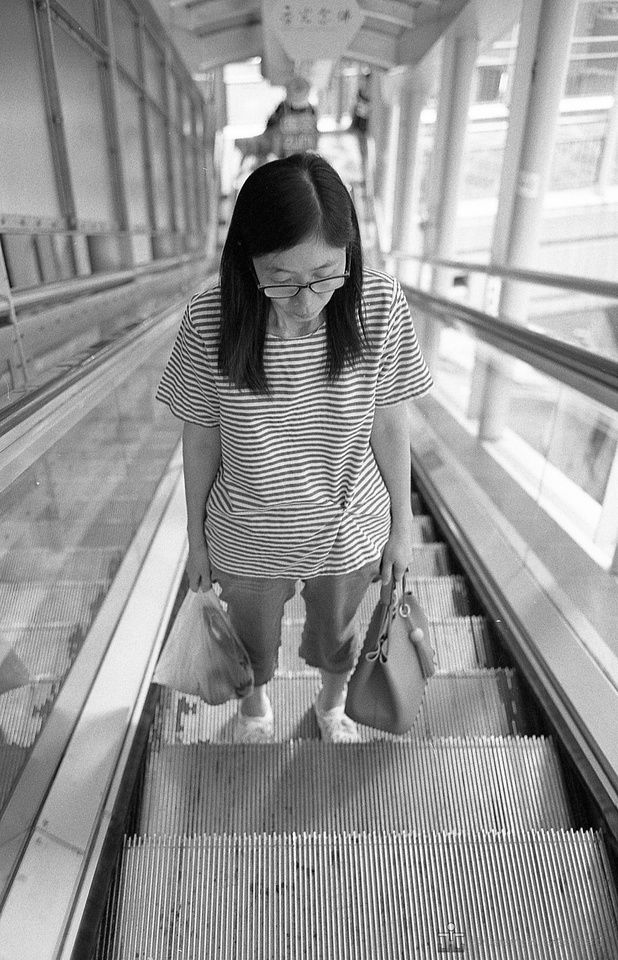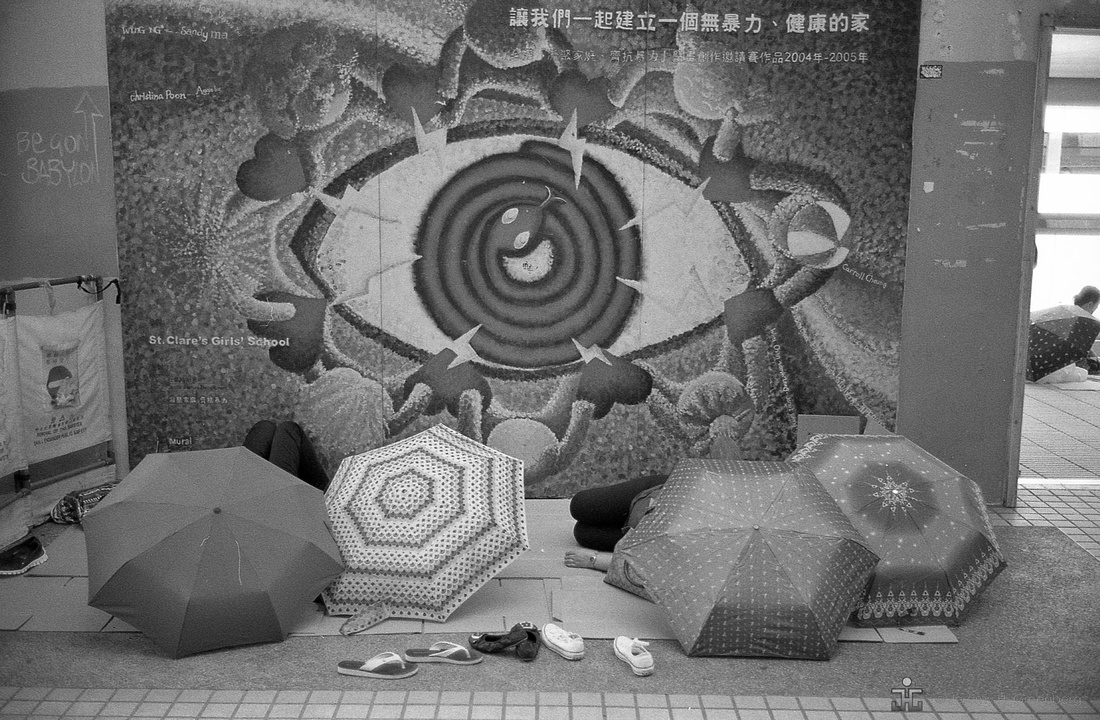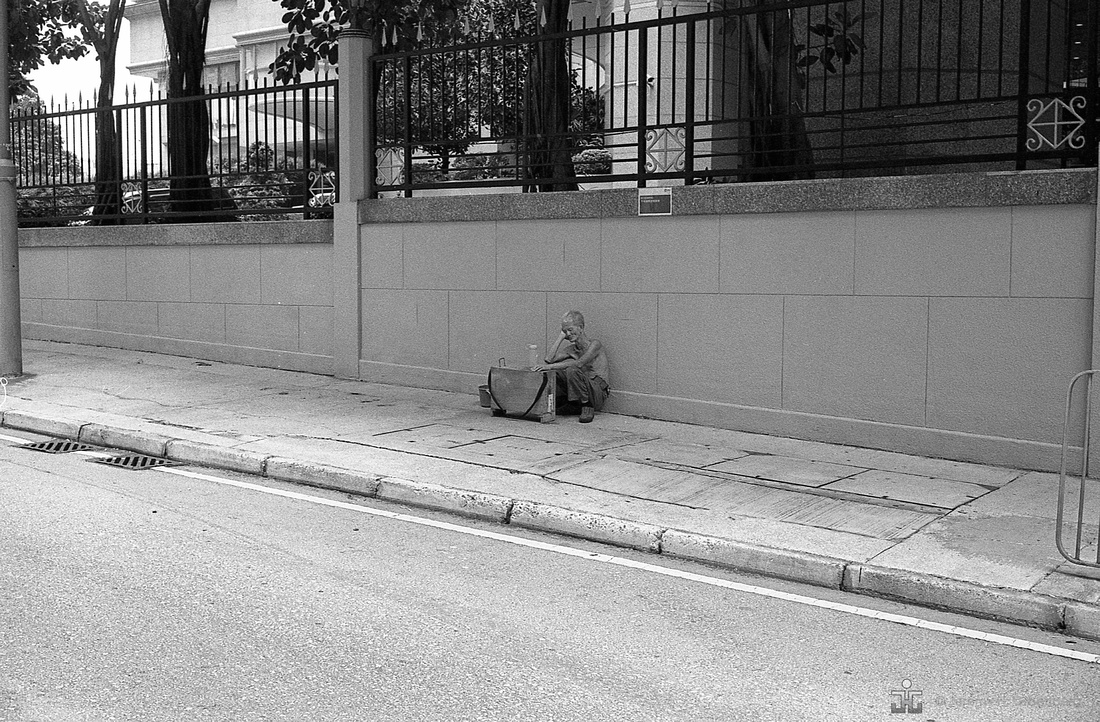Blog #34 Ten ways learning to shoot film can positively influence your digital work.
Blog #34 Ten ways learning to shoot film can positively influence your digital work.
As digital photography improves and trickles down to the masses, the argument still prevails about film vs. digital. There are many pros and cons to both mediums, however, the purpose of this week’s blog is not to enter into that debate. For more on that subject, please refer to Blog#5 . Many photographers (yours truly) find value and advantages to working in both mediums and rest comfortably in both camps. It’s not really an either or issue, but rather a both issue. I will admit that my preference is the look and feel of film. For some, there is a nostalgic, visceral feeling that you get when shooting with film and manual film cameras that the point and shoot experience of using a digital camera just cannot provide. To offer one analogy there is the CD and electronic music files, and then there is vinyl. In spite of film’s resurgence, comeback, or chants from the long lines of picket holders whose signs read Film is not dead, digital is here to stay. The top ten list below offers some encouragement to those forward lookers who have not yet embraced their past and taken the time to learn about the roots of photography from the good ‘ol days.
1. Film slows you down.
When making images with digital, there is no throttle or no end to the fun. The only drawback is if and only if your memory card gets filled up or your battery dies (oh,I have a spare right here). Off you go to do another 1000 images. To make images of quality and meaning, it it not necessarily required but it is more likely the case that slowing down and thinking about the subject, composition, or emotion in the image should have an improved effect. When you have only 12 or 35 exposures all day to work with, you will be extra careful about when and if you will be pressing the shutter release.
2. The excitement of waiting for your images to magically appear before your eye.
Either you send you film away for processing, or you do it yourself. Either way, there is that time between you press the shutter release button and you actually get to see your image. You must wait for a while in image purgatory. Who needs instant gratification when you can wait a whole week to see what your pictures look like?
3. Get it right in camera.
Lightroom, Photoshop and other software programs are replete with image correcting, manipulating, pushing, and pulling options. You can literally move objects around inside the frame like in a jigsaw puzzle. I’m not one for sitting for an hour in front of the computer to work on one image. If that’s your bag then more power to you. Film is less malleable in the post processing world than digital. The options to the photographer are fewer and that’s a good thing. After working with film and experiencing this phenomenon, your digital images may tend to improve as well. You will likely reduce or even abandon thoughts such as,"Oh well, I just crop it out later or fix my poor composition or lighting later in post".
4. Enjoy the tactile and visceral feel of shooting with a manual camera.
Design, metal, fit, finish, dials, knobs, and clicks, this is the stuff that film cameras are made of. Film cameras are beautifully crafted machines. Ergonomically balanced and a pleasure to interact with, real tools. Modern day DLSRs or point and shoots are plastic and awkward to say the least. Most of them are ugly as sin and not worthy of handing down to your children but rather giving to your dog when they inevitably jam or crack, or become rendered obsolete after three months of usage. A film camera can last 100 years and some longer!
5. Limited controls increase your creativity.
Manual cameras usually have three basic controls: aperture, shutter speed, and focus. That’s all you get. You need to use your feet to focus (especially when using a prime lens). So to get certain images a certain way, you need to be creative within those parameters. Fewer choices somehow increases creativity. Film cameras can do this whereas digital cameras have a dizzying array of controls leaving some in decision paralysis.
6. Find subjects that are best expressed in black and white or colour.
When you load your film into the back of the camera it’s one of two types, black and white, or colour. You will need to look for subjects and scenes that are best captured in either or. If the colour is there and central to the subject, or maybe the colour IS the subject, then fire away. Black and white photos tend to be best when texture, form, line, emotion, or some other compositional element is prominent. These limits can help the photographer to achieve acceptable or even fantastic results. You can scan colour film images and convert them to black and white but usually its best to keep it real and avoid doing so.
7. Develop your editing skills since there will be fewer images to edit/critique.
After a day of shooting digital, you could end of with literally hundreds or thousands of images. This will take a long time to sort through and edit. You will only have a few decent photos or "keepers". Alternatively, on that same day, you leave your house with a handful of rolls of film, each having a maximum of 36 exposures. Even if you bring 10 rolls with you, you will have a mere 360 images to edit and select from for editing or posting purposes. This will likely function to increase your hit rate. Less time selecting and editing means more time out and about shooting and socialising. Health experts claim today that sitting is the new smoking. Film, in this regard, will literally improve your life.
8. Get in touch with the look and feel of film and experiment with another medium.
You’re a photographer. You’re an artist. You’re a creative. It’s in your nature (or nurture if you prefer) to experiment. Shoot film. You might actually enjoy the process and have fun. Don't forget about that Oh-so-delicious-grain. It creates an atmosphere and texture to the image that is why many of us fell in love with photography in the first place.
9. Get over the urge to “chimp” your photos.
Looking at the back of your LCD screen immediately after making a photo is called chimping due to the “oo - oo” noises that one tends to make when admiring their own work. This will undoubtedly interrupt your concentration and flow of your work. Avoid this even when you do shoot digital. When you shoot film, this is not an option. Arguably, this interrupts the work flow which shooting and decreases ones concentration on the subject matter and distracts from your living in the now. Photography is very much about living in the now. Shoot now, develop later.
10. It’s not the kill, but the thrill of the chase.
I’m not sure who ever said that but the expression applies to photography for sure. Walking the streets, working in studio, on a project, or during an event is a dynamic, socially uplifting, and professionally rewarding, wonderfully creative experience that should be relished. Sure, viewing and sharing beautiful images is fun and contains it own rewards. Manual film cameras simply connect with the photographer. It’s the journey that we ought to enjoy since that makes up most of what photographers actually do. Here’s another analogy, you can take the bus to work or ride that vintage motorbike with the intoxicating smells, comfortable feel, and delicious sound track.
Enjoy the Ride!
The Light is Always Right!
jhg
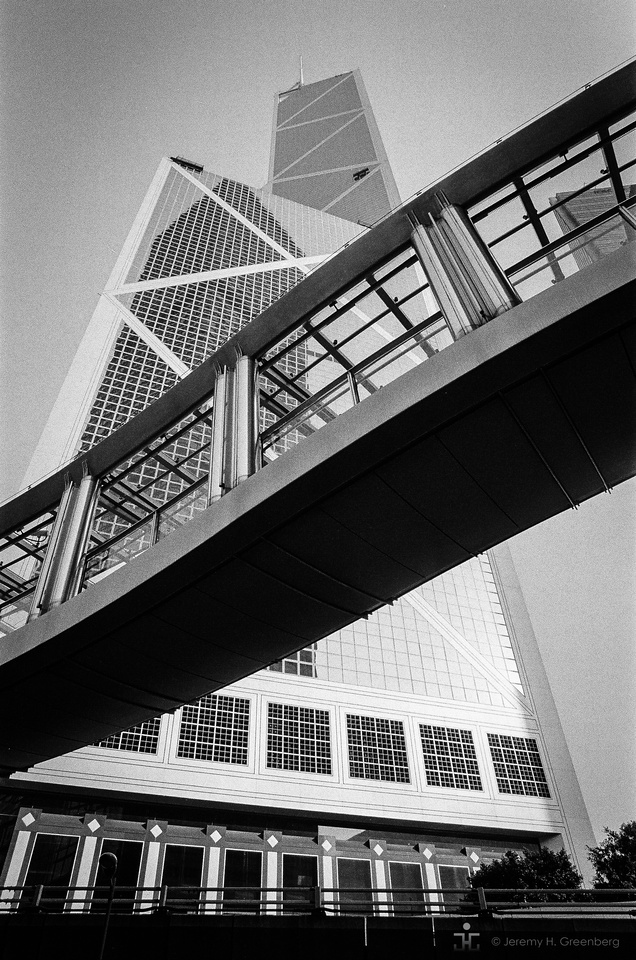

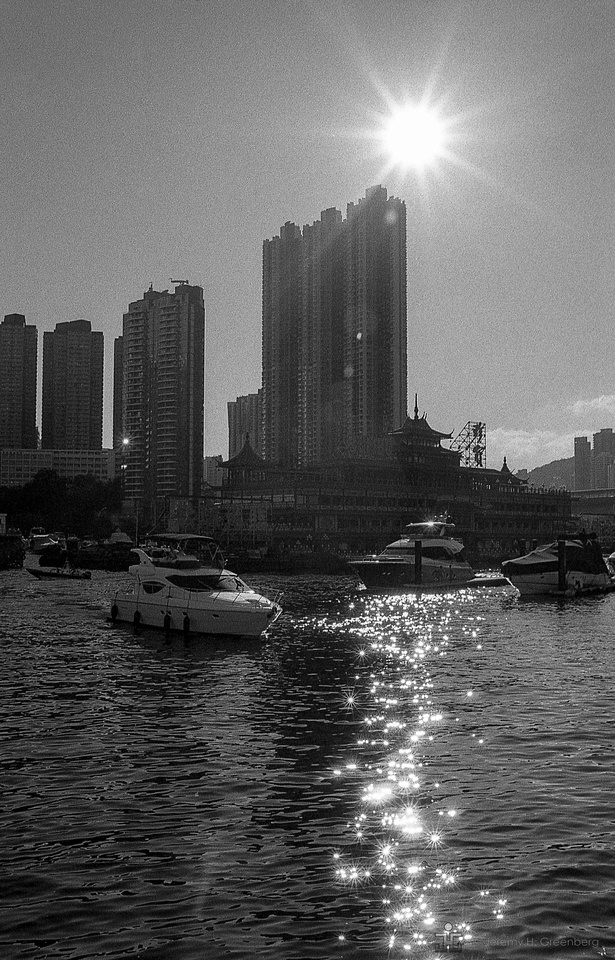

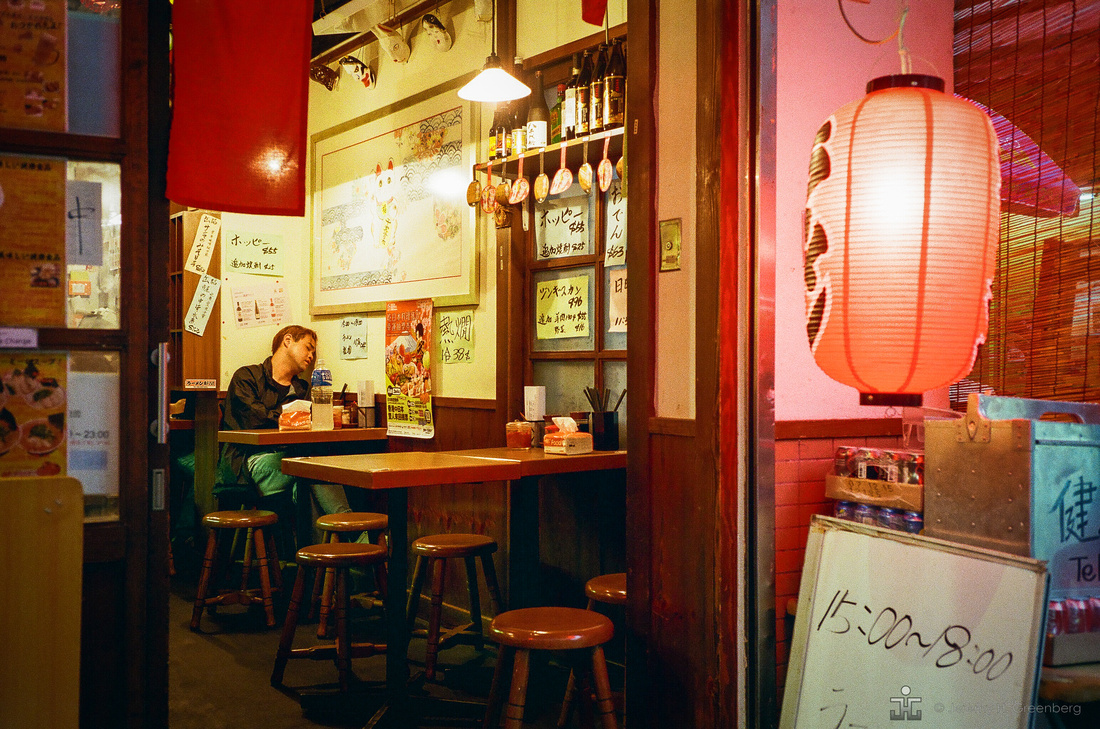

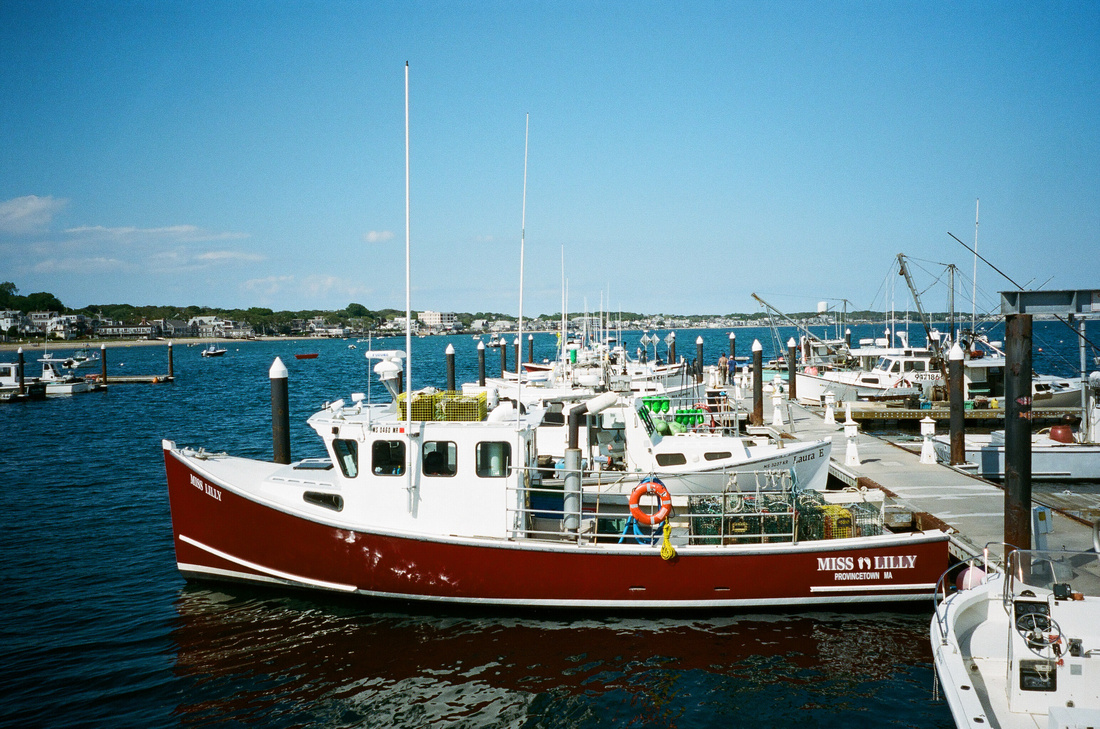

Blog #33 Think BIG!
Blog #33 Think BIG!
Given the title of this week’s blog post, you might think that I will be commenting on some aspect of gear such as sensor size, or the focal length of a lens. While sensor size is a perfectly lovely albeit technological topic unto itself, there have been countless articles to address that topic from various perspectives. Size does matter where focal length is concerned. Shorter (wide) focal lengths have their purpose usually for landscapes while longer telephoto lenses are better for capturing wildlife, sports, and compressing the elements within a frame to give the impression of a shorter depth of field.
Neither of those topics will be the focus of this blog post (pun intended). Rather, this blog will address the topic of thinking big. It’s all fine and good to make individual images that document the places you go or the people you meet or even the food that you eat (sort of). These days everyone is a photographer and there are essentially no rules. Shoot, eat, post, sleep, repeat summarizes today’s zeitgeist.
Many photographers as hobbyists or professionals, begin in the field happily snapping away at whatever strikes their fancy. However, for those photographers that seek to make the leap to professional, or even serious hobbyists, over time, a feeling of emptiness or disconnect may seep in to our photography. We may feel aimless, disconnected, or even worse, uninspired. All artists and creatives go through this from time to time. The cure for this photographer’s writer’s block can be to start a project.
I’m not talking about a collection of photos of door handles here. Door handles are nice. But seriously, who cares? A series of door handle images says nothing about the world except that there are many different (and some beautiful) types of door handles. Collections of photos can be fun and can help the photographer to narrow their scope of subject matter and to get out into the big bad world and start to make images again. So long as their is a fair amount of variation in the images this may be a worthwhile task, or exercise.
I recently went to a photography book fair that featured a well-known photographer that published a book on a collection of images. All of the images, in their own right were well-produced due to their interesting perspective of the subject matter, and well composed frames. However, the entire book was image after image of not just the same subject matter but all of the same subject matter. For example, who would be interested in an entire book of images of door handles? Someone obsessed with door handles, most likely that is short list. The images were so alike, I couldn’t even finish looking through the book. About a quarter way through the book, I had to put it down. There was too much repetition for my taste and such as lack of variety that the book simply did not hold my interest long enough to get past the first few pages. The lack of variety and sheer volume of like images led to a dry and stale experience for the viewer. How many proverbial door handles can one person appreciate in one sitting? Three? Five? Twelve? I think the answer is somewhere between one and the limit of your attention span.
Even National Geographic hosts an “Assignments & Stories” section that usually has simple topics such as Birds, or In the Shadows. I was even fortunate enough to have one of my images chosen for the Built to Walk competition. Contests can be beneficial as well as challenging to participate in not to mention helpful to view other photographer’s interpretations of the subject or theme. This was more of a theme project than a collection. Collections are nice to share with friends or family, and social media. Sure, there are photographic collections hanging in world-class museums but there are other ways to think big in photography.
Thinking big, in my view, is about making images that have a theme. Images that have a theme have more gravitas than snap shots. Themes can include: solitude, love, friendship, loneliness, joy, anger, or childhood, to name a few. Photographs that evoke the concept of a theme are more memorable because many themes are universal and people can relate to the image since we all share a lot of the same experiences, in a broad sense.
A photographer who thinks big will make efforts to work within genres that require theme based collections or series. These include photo journalism, visual storytelling, and social documentary. To work within these areas, the photographer will be required to produce multiple images that are connected by some underlying theme or common denominator.
There are two ways to achieve this end. The first is to set out to make images that are related to a theme or to tell a story. Poverty in the city, the education of women in developing countries, the Winter Olympics, or child care by grandparents in urban settings could be interesting topics that one could document. At some point, words may be put to the images or the photographer could choose to let the photos speak to the viewer without verbal mediation.
The second way that a story might come emerge from a selection of photos is through a more organic process, per se. There is a simple technique that photographers might use to try to assess their style. This technique simply requires one to survey a large set of their images and look for themes. Sorting the photos into piles (using prints or digitally into folders) that have some commonality. The photographer might find that they like to shoot candid portraits in color, candid portraits in black and white, landscapes, food, people at work, or travel photography. Finding the common factors in ones work could lead to the development or emergence of a story of some type.
In both processes briefly described above, the results should be instrumental in aiding the photographer to identify a body of work on a given theme or subject. This body of work might take months or years to be formulated into a presentable and publishable piece. There are big bodies of work and smaller project-based bodies of work. Either is a worth endeavour and a proper challenge for the hobbyist and professional alike. Thinking big is about having something to say and allowing your photographs to do the speaking for you.
The three images below are presented as a small set. Can you identify a story emerging from them? Is there a theme? Are they saying anything to you? There are many challenges to the photographer these days. Perhaps the greatest of all challenges is to think big and the only person who can stand in the way of that is you.
The light is always right.
jhg
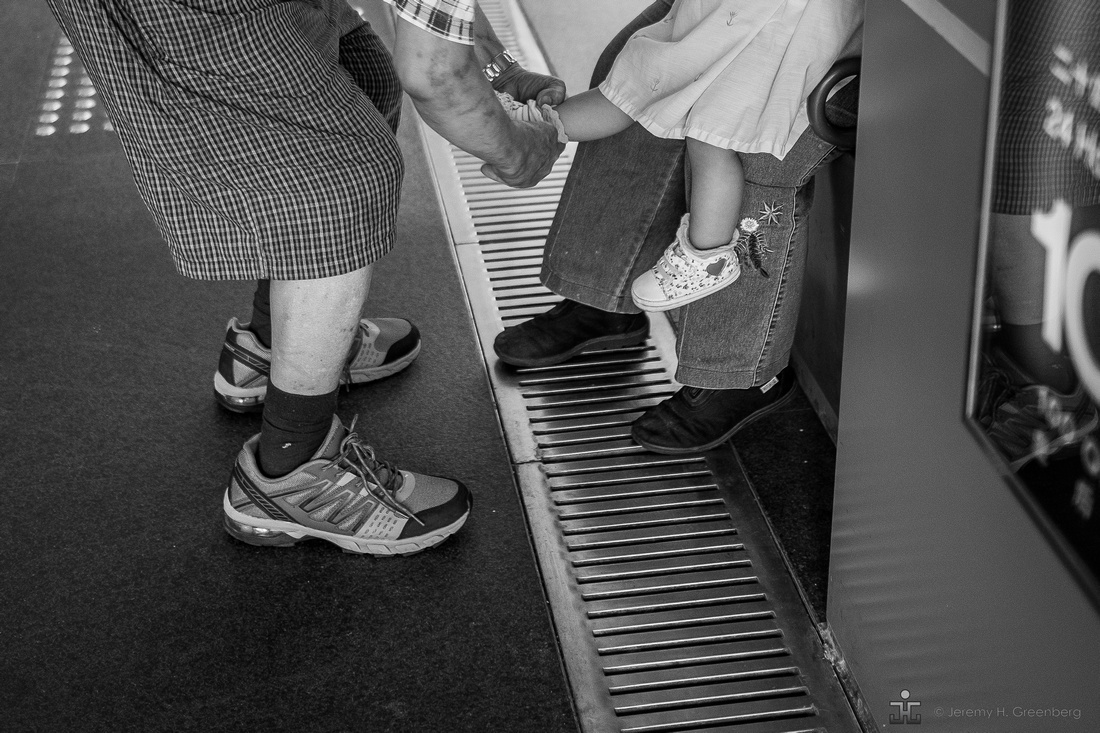

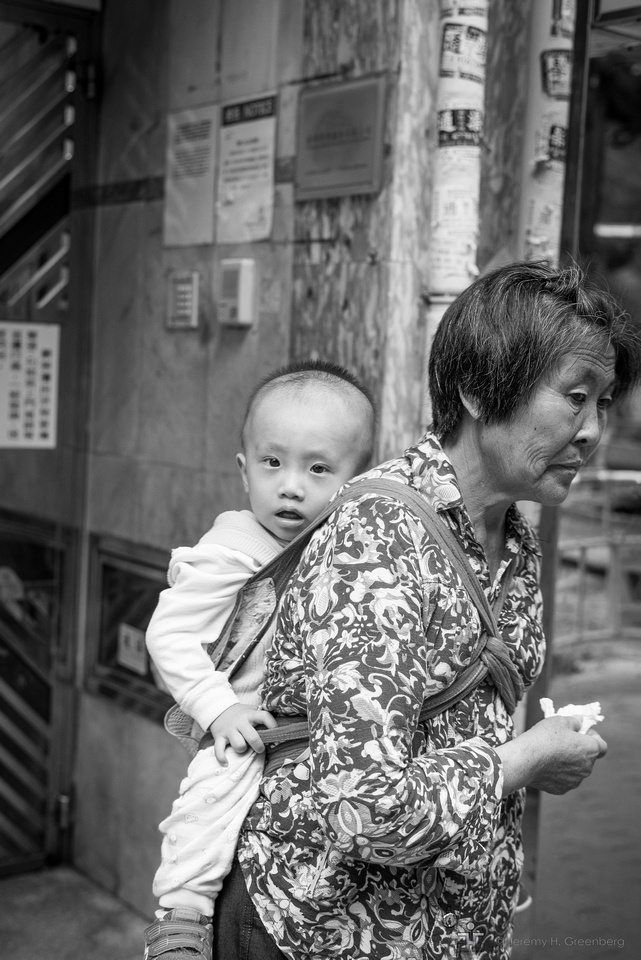

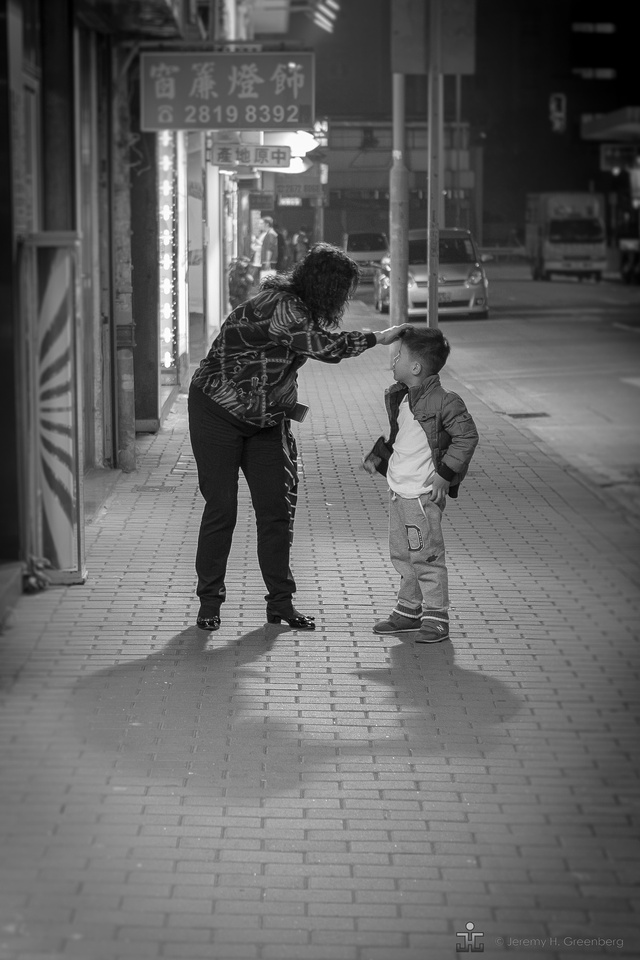

Blog #32 Experimentation in Photography: Report #1 Comparison: Four Conditions using 400TX
Blog # 32 Experimentation in Photography: Report #1 Comparison: Four Conditions using 400TX
The concept of experimentation can easily be applied to the arts as well as to traditional scientific endeavours. It is likely the case that all artists and photographers experiment throughout their careers. In fact, the field of photography lends itself nicely to the practice of experimentation. In photography, there are a plethora of options available. The artist photographer can vary the conditions under which they are producing images in a multitude of ways. For example, the question of film or digital is pervasive in the field at the present time. If the choice is to use film, there are many sizes, and types of films not to mention the obvious difference between black and white or color. There are many types of lenses that the photographer may decide to experiment with. Wide angle, standard, prime, zoom, telephoto, fisheye, and portrait are but a few of the options that are available to the photographer. Sure, there are conventions such as making landscapes with a wide angle (i.e. 28mm or wider) or a portrait with a portrait lens (85mm) but the photographer is free to change, replace, and break those conventions or rules as he or she sees fit. For more discussion on the topic of experimentation in photography, see here.
There are multiple genres to be explored such as portrait, landscape, social documentary, macro, food, architectural photography, and others. Most photographers will explore most, if not all, of these genres when they are starting out to find out what they like and what they are good at. If you are a newbie and not sure what genres you are most comfortable with, I suggest a project 365 that will help you to narrow your approach. See Blog #2 for my first blog on the subject.
Aside from decisions about gear, there are filters, lenses, and post-processing options. Push/pull processing regarding film and developing options in the days of darkrooms needed to be done at the point of developing while the dodging and burning during the printing process used to lighten or darken parts of an image can be very difficult to control with a high degree of precision. There are many other variables that can be systematically manipulated or tested to aid the artist in what he or she is trying to express in their vision.
This blog post will report on a simple experiment that aimed to test four different developing types using the same camera, film, and lens. The camera used was a rangefinder type body by Minolta called a CLE that contains a light meter and an Aperture Priority mode for shooting. The same lens was used and that was a Leica 40mm f/2 prime lens. The same film was used and that was Kodak Tri-X 400 (400TX) speed black and white 35mm film.
The camera, lens, and film combination was exposed (pun intended) to four different conditions. Two conditions varied the dilution of developer and also the development time. The two conditions were 1+12 dilution and 1+15 dilution of Rollei Supergrain brand developer to water. The difference was a mere 4ml of developer, however, the development times are required to be varied, slightly as a function of the different dilutions used. In both conditions, a Yellow #8 filter was used on the lens on and off in both conditions.
So the four conditions were:
- 1+12 Yellow Filter #8
- 1+12 No Filter
- 1+15 Yellow Filter #8
- 1+15 No Filter
It is true that there were slight lighting variations across the conditions in the photos, however, all images were made in the afternoon hours under very cloudy conditions with no flash used in all photos. You can view the images larger and with their titles (experimental conditions) in the Galleries/Blog Photos Folder here.
The results that were observed were that the photos that were developed using the 1+15 dilution process had increased contrast. This is mostly apparent in the black areas of the photos. The blacks were blacker and the tonal range appeared to be slightly enhanced. Regarding the grain structure, this was difficult to determine with the naked eye but my feeling is that the grain structure was slightly smoother or more fine with the 1+15 development process. It is possible that the size of the grain was smaller as well.
An analysis of the images viewed a a 1:1 enlarged view might show different results but since photos are not normally viewed at that size, I opted to use the normal view only for this comparison.
The use of the yellow filter also clearly added contrast to the image. This can be observed clearly in the difference between the images of the men playing checkers and the Tai Chi group. These images were made within minutes of each other and also within a few meters and therefore essentially the same lighting conditions. The Tai Chi group image that was made using the yellow filter has brighter whites (practically blown out) and blacker blacks (little detail in the woman’s black shirt closest to the camera).
An even more clear comparison of the effects of a yellow filter can be made using the image of Christine in the entrance to Jamia Mosque with and without the use of the yellow filter. The images were made within one minute of each other will all variables held constance except for the filter. Both were developed using the 1+15 condition.
It was an interesting to see the results of the differing levels of contrast and possible effects to the grain structure. This was a simple and fun experiment and similar effects can be tested across film types, for example. I will likely continue with this column using various camera, lens, and black and white film , and developing combinations.
So what’s your next experiment going to be?
The light is always right.
jhg
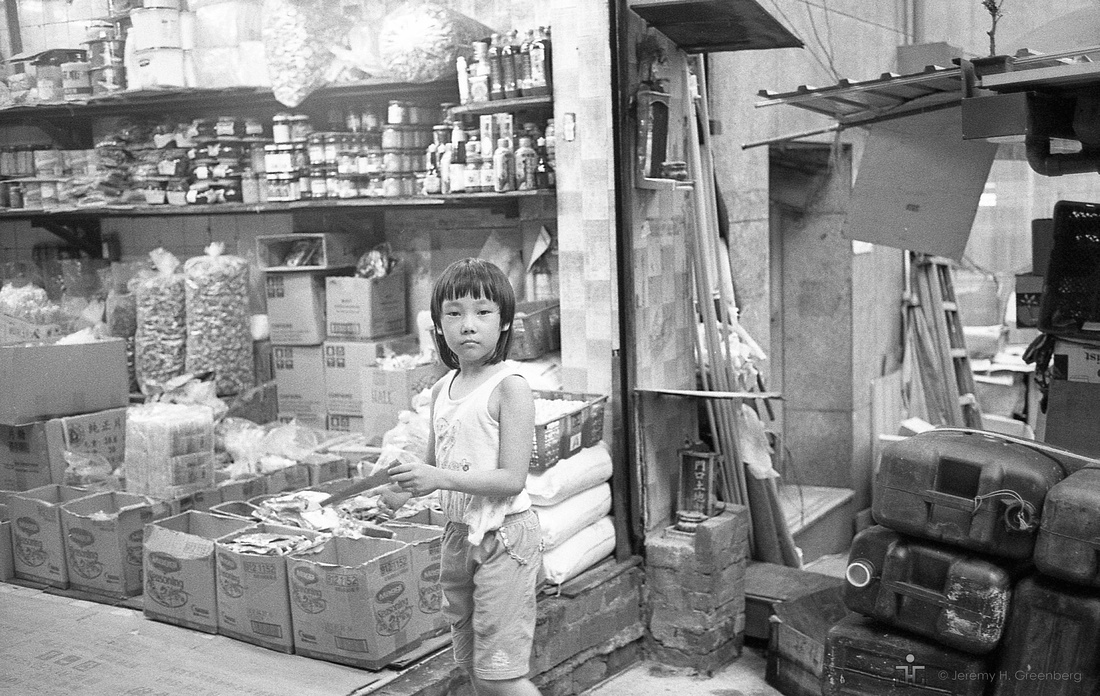

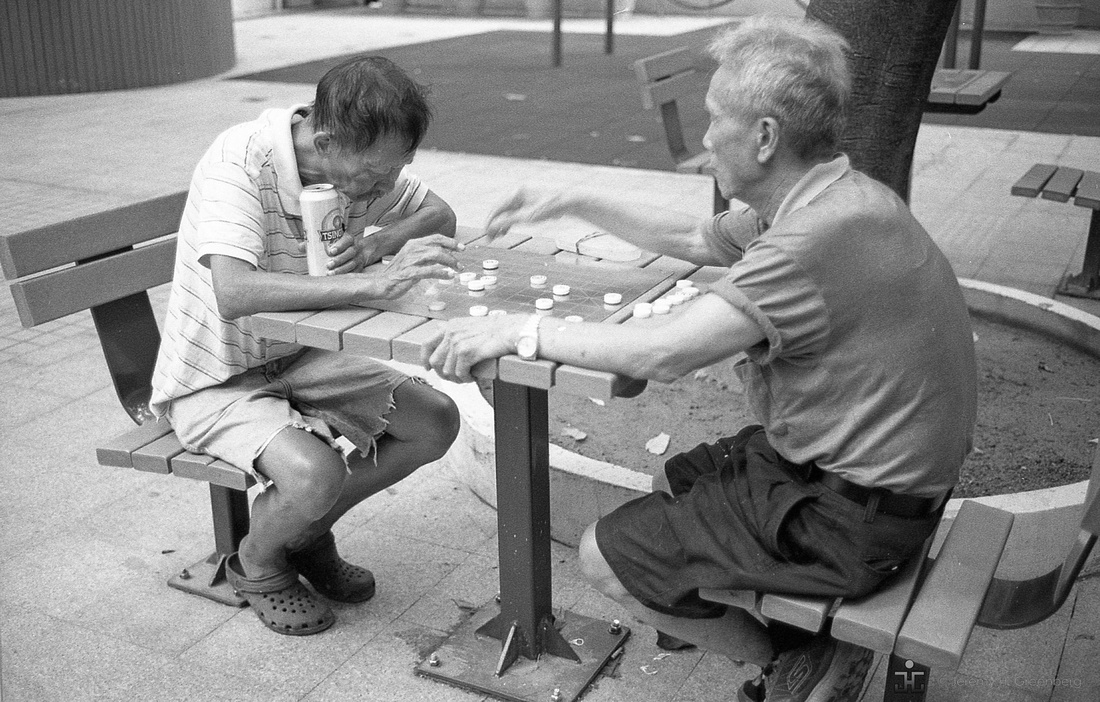

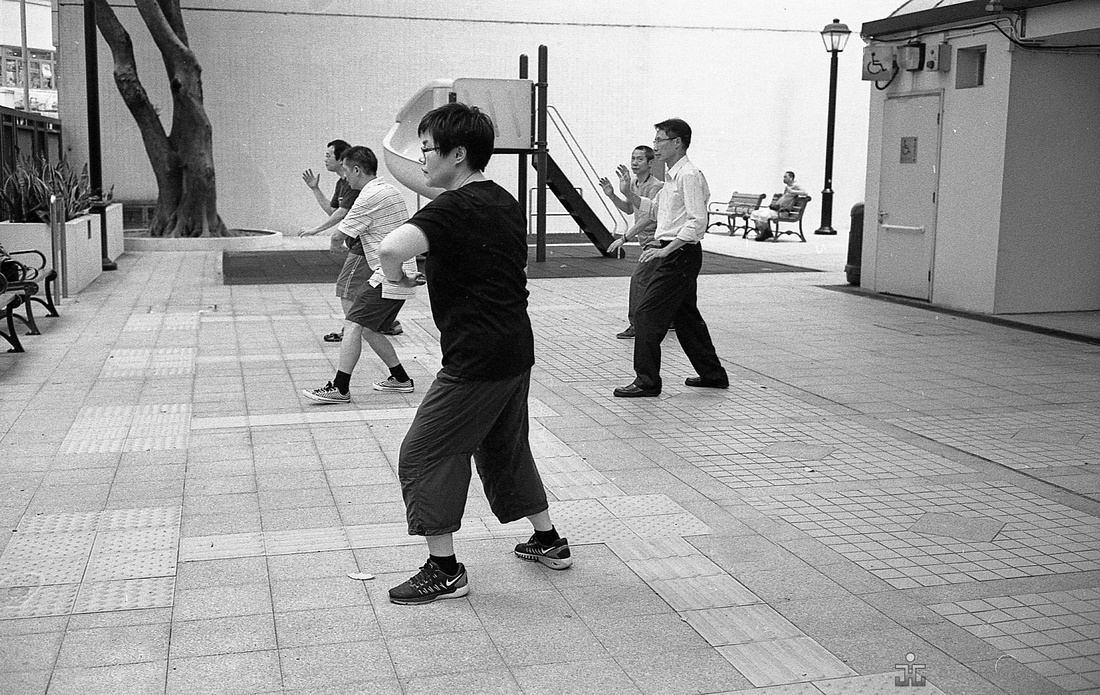

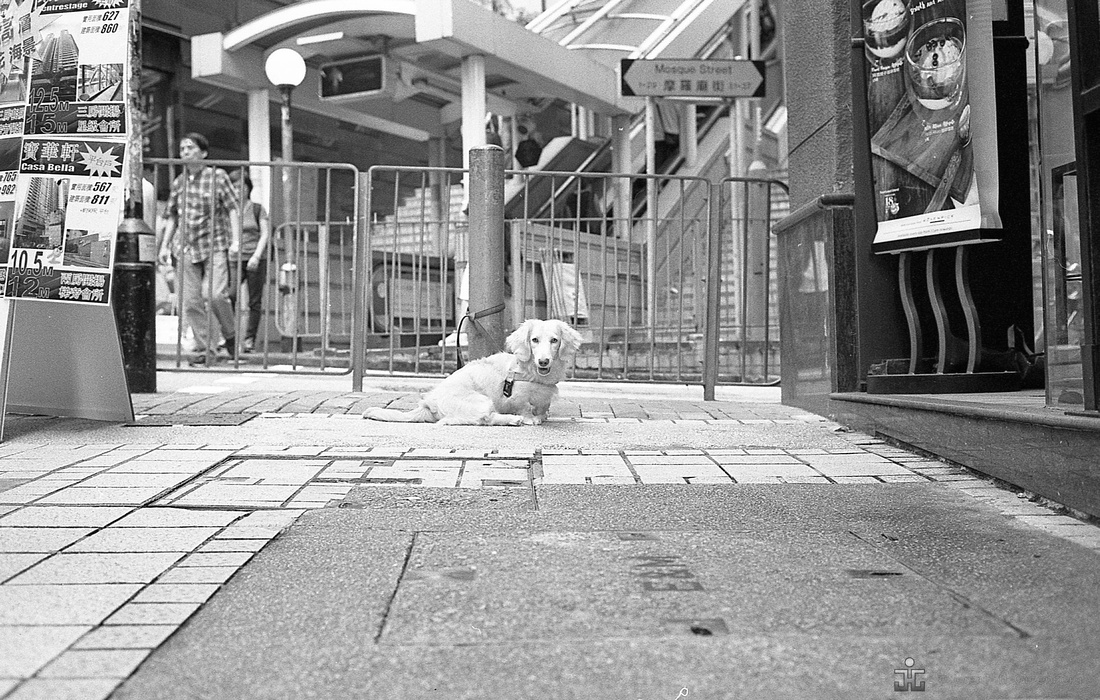

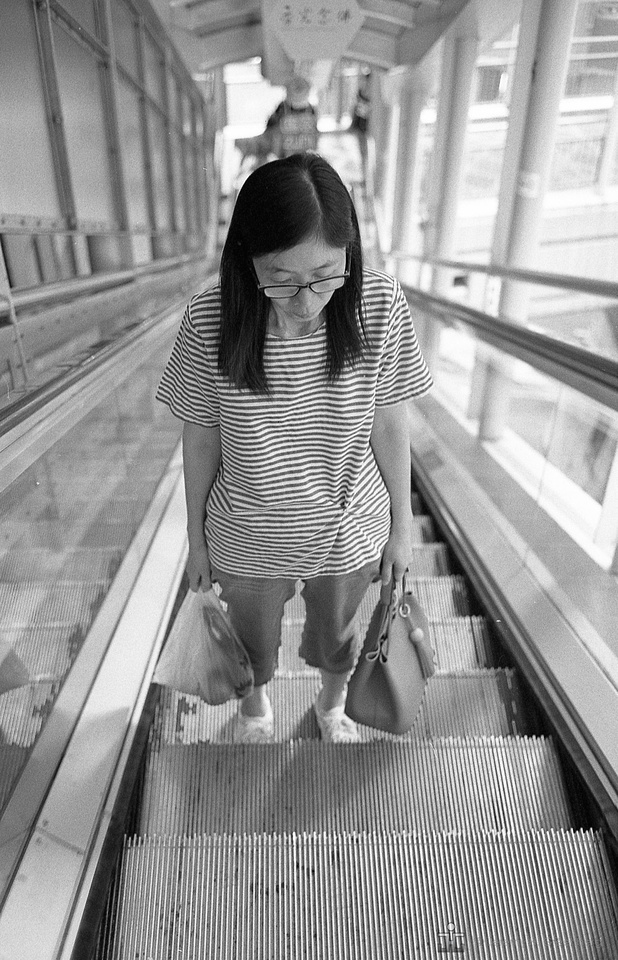

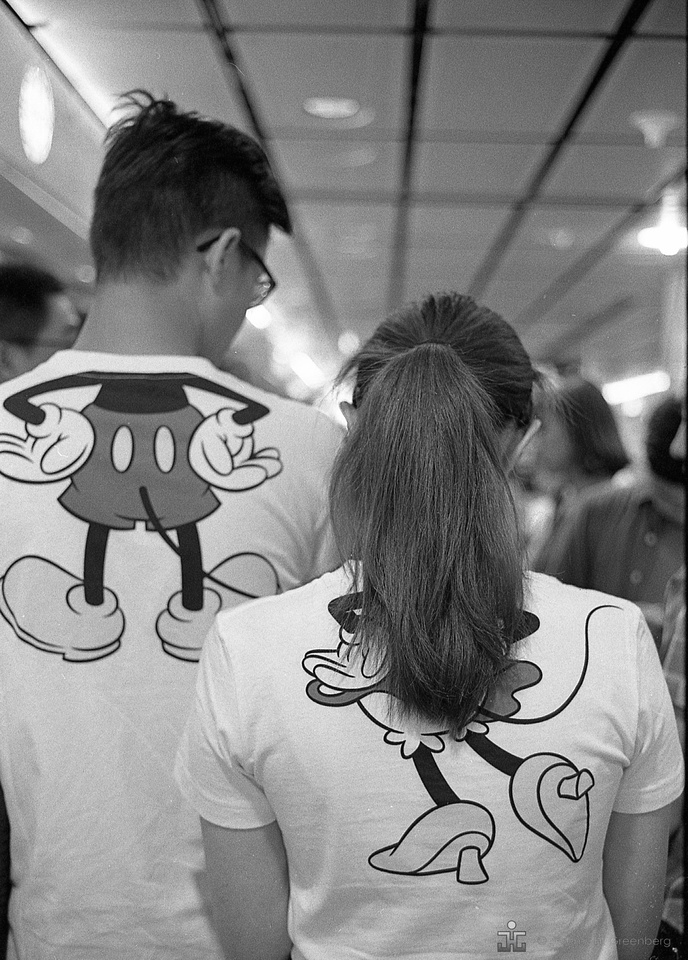



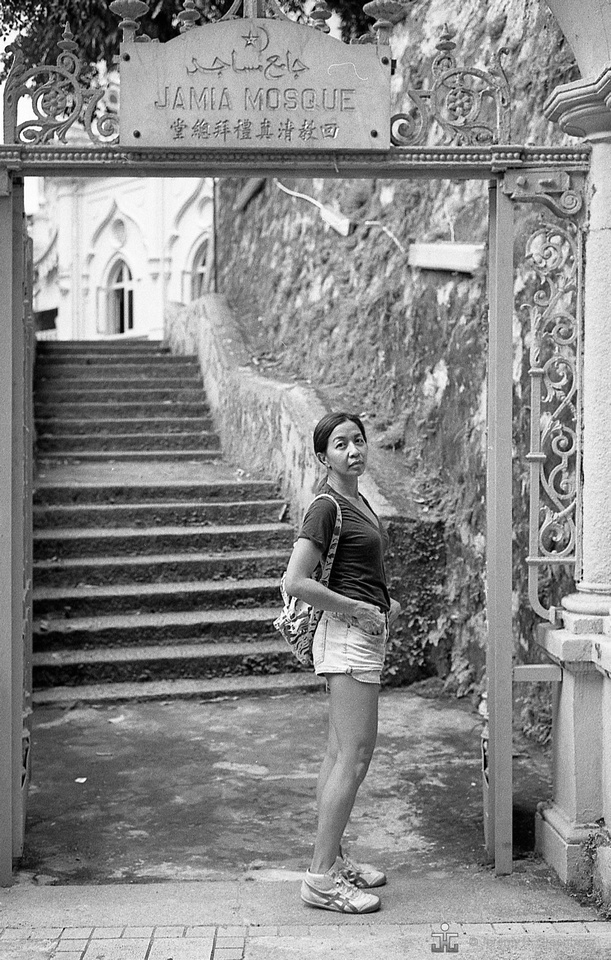

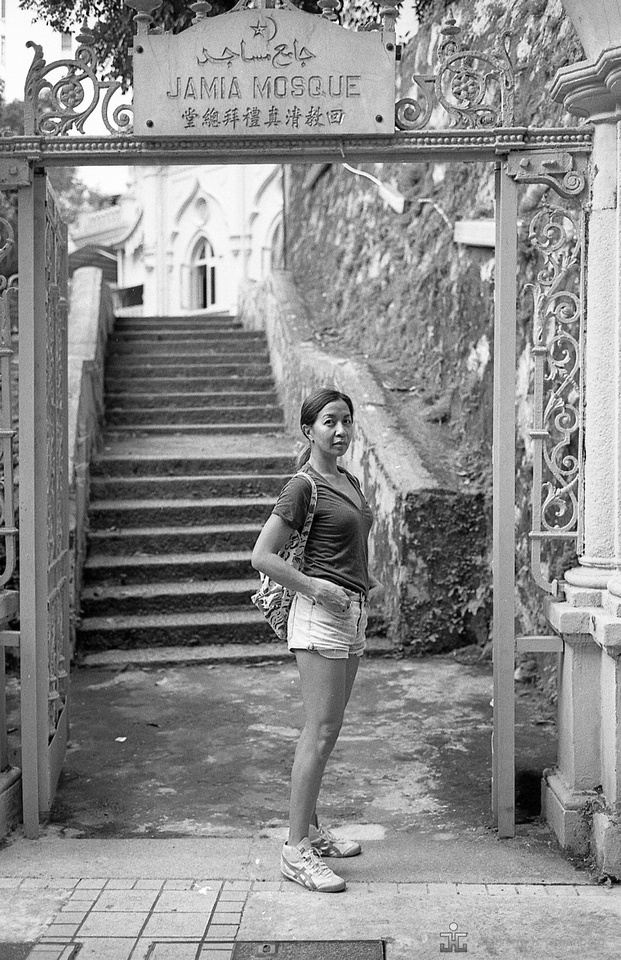

Blog #31 Photography Quotations
Blog#31 Photography Quotations
This week's blog post will include a list of quotations that I have collected over the years. I read, collect, and re-read these from time to time to draw inspiration in my photography, and in my life. These short and simple quotations from old masters and some great living photographers help me to review the basics, reflect on my work, and generally try to improve my images. Most photographers would likely agree with most of the quotations and immediately identify the value offered from them. However, some are controversial. The purpose of this blog will not be to debate or analyze the validity each quotation. They are all, obviously, the informed opinions of the artists who said them. They are simply food for thought. You may, of course, agree or disagree but I hope that they may prompt some constructive dialogue, inspire some critique, or otherwise help you to shape your own ideas and approach to drawing with light.
At the end of Susan Sontag’s On Photography she has many pages of truly amazing quotations about photography. Buy the book and read it. Don't just skip to the end and read the quotes. It's worth the read and the book is as relevant today as it was when she penned those essays in the early 1970s. See my Blog #22 for a review of Sontag's book.
I include a few non-photography quotes (just for fun) and also a link to the oh-so-quotable Albert Einstein. At the end of the quotations there are a few sample images that I have been making using various black and white film processing techniques at home. More on that topic will be described in subsequent blogs.
Jeremy's selected quotations related to photography
What use is having a great depth of field, if there is not an adequate depth of feeling?
W. Eugene Smith
A camera is easy to use, but a proper use of the eyes requires a long, long apprenticeship offer capped with great pleasure.
Marc Riboud
The pin-sharp world of street photography is like high-definition television; what ultimately matters is the quality of the show.
David Gibson
The world is going to pieces and people like Adams and Weston are photographing rocks!
Henri Cartier-Bresson
A Camera is a tool for learning how to see without a camera
Dorothea Lange U.S. Photographer/Journalist 1895-1965
A photographer takes an instant out of time, altering life by holding it still.
D. Lange
Embrace light. Admire it. Love it. But above all, know light. Know it for all you are worth, and you will know the key to photography.
George Eastman, Founder of Eastman Kodak Company, 1854–1932
I have a deep-seated distrust and even contempt for people who are driven by ambition to conquer the world ... those who cannot control themselves and produce vast amounts of crap that no one cares about. I find it unattractive. I like the Zen artists:
they’d do some work, and then they’d stop for a while.
Saul Leiter
Twelve significant photographs in any one year is a good crop.
Ansel Adams US Photographer, 1902-1984
A camera is a passport to enter a special part of the universe that most people do not see;
a place between reality and the imagination.
Jeremy Harris Greenberg
If you shoot film, you’re a photographer. If you shoot digital, you’re an editor.
Charlie Kirk
Photography is not objective. It is deeply subjective, my photography is consistent ideologically and ethically with the person I am.
Sebastião Salgado
Seeing is not enough; you have to feel what you photograph.
Andre Kertesz
You take 35 degrees out of 360 degrees and call it a photo. No individual photo explains anything. That’s what makes photography such a wonderful and problematic medium.
Joel Sternfeld
A photograph doesn’t exist until it is printed.
Constantine Manos
In order for the mystery to work, you need abstraction from reality. Black and white is an additional abstraction, in addition to selective framing, to the freezing of the moment that in reality is a part of an infinite number of other moments (you have one moment and it never moves again; you can keep looking at the picture forever). The black and white is one more step away from reality. Color, for me, is realer, but less interesting.
Richard Kalvar
As a photographer if your photos are too obvious then you’re missing the point. Photos are about mystery, about not knowing, about dreams, and the more you know about that—then you can recognize them on the street.
Jason Eskenazi
Ultimately any photo project that you do isn’t really about the subject matter, it is about you - and revealing yourself. If you don’t reveal anything about yourself, you are boring everyone. It is a confession in some ways.
Jason Eskenazi
In photography everything is so ordinary; it takes a lot of looking before you learn to see the extraordinary.
David Bailey, English Photographer
An artist is a man who seeks new structures in which to order and simplify his sense of the reality of life.
John Szarkowski 1966
Mallard said that everything in the world exists in order to end in a book. Today everything exists to end in a photograph.
Susan Sontag
Time eventually positions most photographs, even the most amateurish, at the level of art.
Susan Sontag
The heart and mind are the true lens of the camera.
Yousuf Karsh
Non-Photography related quotations
There is no greater violence than to deny the dreams of our children.
Kailash Satyarthi (Nobel Peace Prize Laureate 2014)
Work is the Curse of the Drinking Class
Oscar Wilde
You miss 100% of the shots you don't take.
Wayne Gretzsky
I have not failed. I’ve just found 10,000 ways that won’t work.
Thomas Edison
The creative adult is the child who has survived
Ursula K. Le Guin
Blog #30 DIY Photography
Blog #30 DIY Photography
Two significant photography events happened this weekend that seem coincidental.
However, I don’t believe in coincidences. I prefer to call them significant events. The law of determinism states that events occur because of other events. In other words, everything happens for a reason. The topic of this week’s blog is film photography. Indeed, film is not dead . In fact there has been some evidence to the contrary. There may very well be a resurgence in film photography.
The first of the two significant events is that I read this great article in Artsy by Molly Gottschalk about the resurgence of film that contained the interesting metric about a third of the film shooters these days were between 20-30 years old. If this is true, then it is refreshing to know that the newer generation of artists, professionals, and hobbyist photographers are embracing film.
Second, I started to develop film at home. I bought a few materials and chemicals and developed my first 35mm black and white roll a few days before writing this blog entry. That’s right, DIY (Do-It-Yourself) all the way. It’s amazing how simple, and time saving it can really be. The next step is that scanning at home should be a breeze. I purchased an Epson V600 for the job. It’s a pretty basic scanner and should do the job just fine. I love the idea of multi-tasking. When the film is drying (that takes about an hour), I can doing other things like work or read at home. The scanning can also take an hour or less but when you’re at home, the images can go right into Lightroom for post processing and sorting. Developing at home should actually save a little bit of money in the long run especially if you calculate time and travel to the photo store.
My last work flow routine is something that I will still need to do for colour film. That is, drive or take the MTR (train) to the photo place in TST (almost an hour), wait 1-1.5 hours for the processing of 1-2 rolls of film. Drive or train it back home, then load the CD into the computer and download the images into Lightroom. I estimate that I will save at least an hour on every developing activity. That’s really worth it if you ask me. There are tons of resources and applications online for everything that you need to develop and scan your own film. Colour, however, is more complicated and easier to screw up so for the time being, I’m sticking to black and white. I actually prefer it most of the time, anyway. It’s a real zen experience to shoot, develop, and scan (or print in the darkroom). It’s really about enjoying the process of making images. It’s the thrill of the chase, not the kill, sort of thing.
I will still need to access the darkroom at work (International School) for making contact sheets or prints but I don’t need to do that to regularly.
The materials needed are really simple. You need running water and a sink as well as a place to hang dry the film. Some fishing line and a few clips will do just fine. Any bathroom, regardless how small should work. In terms of chemicals and hardware, the minimum requirements are as follows:
- Developer (Duh!)
- Stop Bath (Essential to stop the development process)
- Fixer (critical step that removed the silver oxide fairy dust from the emulsion)
- Developing Tank (usually comes with 1-2 film reels)
- Changing bag (lightproof for removing the film from the cassette and loading it onto the reel)
- 1-2 film loading reels for 35mm and/or 120mm (medium format film)
- A few different sized plastic measuring beakers for measure the dilutions of chemicals to water (i.e. 50ml, 260ml, 500ml)
- Scissors (for cutting the leader and end go the film and cutting the film into strips for storage or scanning
- Plastic negative film holders (acid free and archival quality is the way to go)
- Thermometer suitable for water (most films get developed at 20 degrees celsius)
- Timer or application on a smartphone that will alarm at the appropriate time intervals to guide you through the process
That’s it! All of this stuff actually takes up a surprisingly small space to store. The box that I am using to store this stuff is about the size of a boot box or two shoe boxes. A scanner is not small but its certainly not prohibitive and can be packed and stored when not being used. The chemicals and hardware cost a total of around $ 200 USD and should last many years. The amount of chemicals should be suitable to develop 50-60 rolls of film. The scanner is about $200 USD but should last many years as well. All in it’s around $400 USD give to take depending what you buy but this is pretty much the basics. Most of the materials are re-usable except for the consumable chemicals of course. Don't drink them! consumables are not all for drinking.
So, are you ready to become a DIY-guy? (or gal). It’s quite liberating to be self-sufficient at anything really, not to mention fun. If you’re a film shooter and get regular enjoyment out of shooting film then doing the DIY-thing is a worthwhile investment.
Good luck!
The light is always right.
jhg
